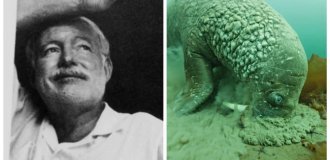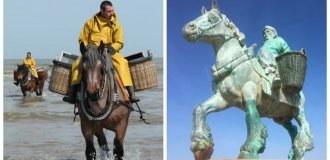Feels like a success. The fight for a weather station on Spitsbergen (4 photos)
The Svalbard archipelago in the Arctic Ocean was of great importance for naval operations during World War II. It was only natural that control over the archipelago was fought over with varying success. And finally, in 1943, Germany decided to turn the tide. 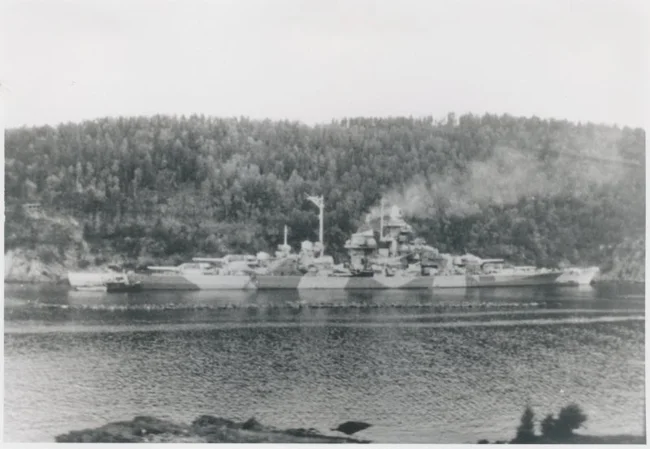
Tirpitz in Fettenfjord, 1942
The fighting first reached Spitsbergen in August-September 1941: a squadron of the Royal Navy destroyed coal mines that supplied products to German-occupied Norway, a German weather station, and evacuated residents.
The Germans soon restored their weather station, and the British fleet, in order to stop such actions, had to conduct a new operation in May 1942 against the meteorologists and their guards who had settled on Spitsbergen, and then place a garrison of 150 Norwegian soldiers subordinate to the government in exile. The British left the Norwegians with equipment and four guns - two coastal and two anti-aircraft.
The first half of 1943 for the Kriegsmarine was a period of struggle between admirals and Hitler, who demanded that the entire surface fleet be scrapped as unnecessary. In order to demonstrate its usefulness, the fleet commander-in-chief, Grand Admiral Dönitz, proposed an operation to capture Spitsbergen. In addition to the demonstration for Hitler, it was planned to "reincarnate" the work of the weather station, which was of great importance for submarine operations, especially against the Arctic convoys to the USSR.
By September, the plan for the operation, codenamed "Zitronella" (sometimes also called "Sicily"), was ready. It was planned to deploy two battleships - "Tirpitz" and "Scharnhorst", as well as nine destroyers - Z27, Z29, Z30, Z31, Z33, Z15 "Erich Steinbrink", Z20 "Karl Galster", Z6 "Theodor Riedel" and Z10 "Hans Lodi", on board which there were about 600 soldiers from the 230th Infantry Division. 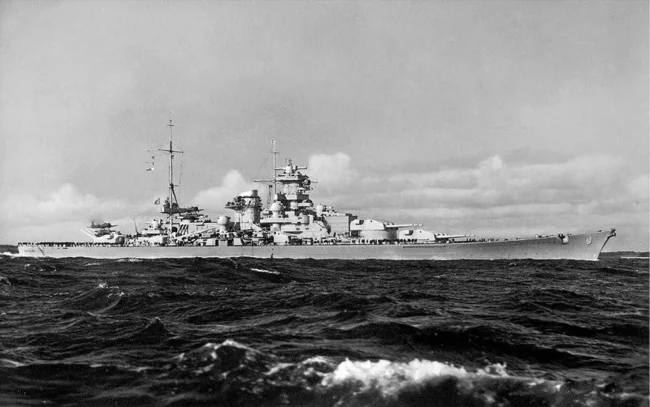
Scharnhorst at sea, 1939
On September 6, 1943, at 8 a.m., the unit under the command of Admiral Oskar Kummetz left Altefjord and headed for Spitsbergen. At about 9 p.m., a British reconnaissance plane flew over the deserted fjord, but no one could have guessed that the Germans were heading for the archipelago. The Norwegians were not warned, and at that time the squadron was less than 400 km from the target.
On September 8 at 3:00, the Scharnhorst and several destroyers began landing troops in Advent Bay, while the Tirpitz and the remaining destroyers headed for Isfjord, raising white flags to mislead the enemy. However, before they had even reached their target, the Tirpitz intercepted a message from the station in Grønfjord: "three enemy cruisers and seven destroyers have arrived." The signalmen on the battleship tried to jam the communications, and this apparently failed, since at 4:00 a.m. a response to this report arrived from Reykjavik.
The Germans had no choice but to open fire. The Tirpitz fired its main guns at the communications station, silencing it, and then, together with the approaching Scharnhorst, began shelling the Norwegian coastal fortifications in Barentsburg and Longyearbyen. In order to disable two Norwegian guns, the Tirpitz alone had to fire 52 380 mm and 82 150 mm shells. In the end, the guns were suppressed, and the battleships aimed at the coal depots and the power plant, while the destroyers landed troops.
Then the Germans moved to the Grønfjord. Having let the Tirpitz go ahead, the destroyers Z29, Z31 and Z33 were to land troops in Barentsburg. This turned out to be a serious mistake: the city's defenders had two 40 mm Bofors anti-aircraft guns, and they immediately opened fire. Before the Germans realized what was happening and made way for a battleship capable of suppressing the enemy's firing points, the destroyers Z29 and Z33 were damaged, the latter so badly that it had to be taken in tow. 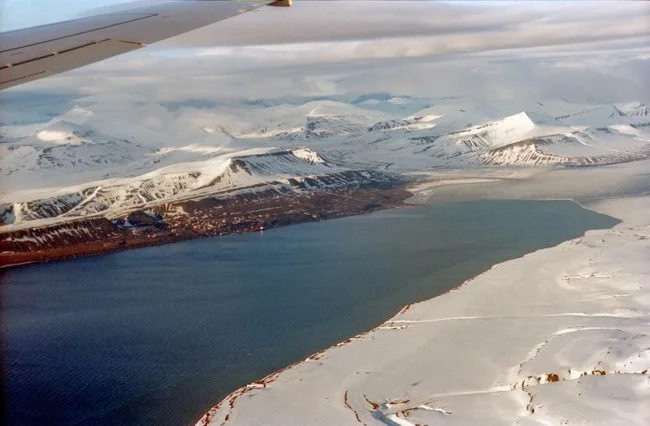
Grenfjord. The small settlement is Barentsburg, which was shelled by the Tirpitz
Soon, having spent 12 380-mm shells, the Tirpitz destroyed the anti-aircraft guns and began shelling the coal mines at Cape Herodden. Afterwards, the battleship went deeper into the fjord and shelled the shore again, after which the destroyers were finally able to land troops.
Some of the Norwegians, using the burning mines as cover, were able to escape, while the rest were taken prisoner, mainly in Longyearbyen, where the Scharnhorst had entered again. The landing force began to blow up the mines and warehouses, and also began to install a new weather station, while the battleships continued to shell the mines and buildings on the island. Kummetz hurried his men, wanting to go to sea at 11:00: there was a danger that a report from Reykjavik had been sent to the British Admiralty, and the Royal Navy had already gone out to intercept.
The Germans managed in time: having reloaded the landing force and prisoners, the squadron went to sea, but was forced to wait about 12 hours due to the delay in returning one of the seaplanes from the Tirpitz. As soon as he returned, Kummetz ordered the speed to be increased to 19 knots, and the ships left before the British actually saw them when they left the ports. 
The American cruiser Tuscaloosa, which arrived at Spitsbergen in October 1943 after a raid by the German fleet. Photo taken on October 7, 1942
The German losses were 16 wounded, one of whom later died. Also, the senior sailor of one of the destroyers was shot on the Scharnhorst for cowardice - he hid on board, ignoring the order to disembark with the landing force. The Norwegians lost six killed and 31 captured. The Norwegians who remained on the archipelago received help in October from the cruiser Tuscaloosa, which arrived on October 19. Together with the reinforcements, the Norwegians destroyed the weather station again.
Since the Germans still needed this weather station, and it was pointless to fight for permanent control over the archipelago, it was decided to place it secretly. Luftwaffe pilots, remaining undetected, landed on Hopen Island in the southeastern part of the archipelago and installed the station, after which they serviced it. They surrendered only in September 1945 to the captain of a Norwegian fishing vessel who accidentally stumbled upon them.
Thus, the raid on Spitsbergen can be called a success for Germany. The surface fleet proved to Hitler that it could still be useful. Despite the fact that the forces directed against the Norwegians were extensive and the German losses, considering the enemy numbers, were too high. In the end, the weather station had to be installed in another way, but the fleet continued to exist and distract the Allied forces.
